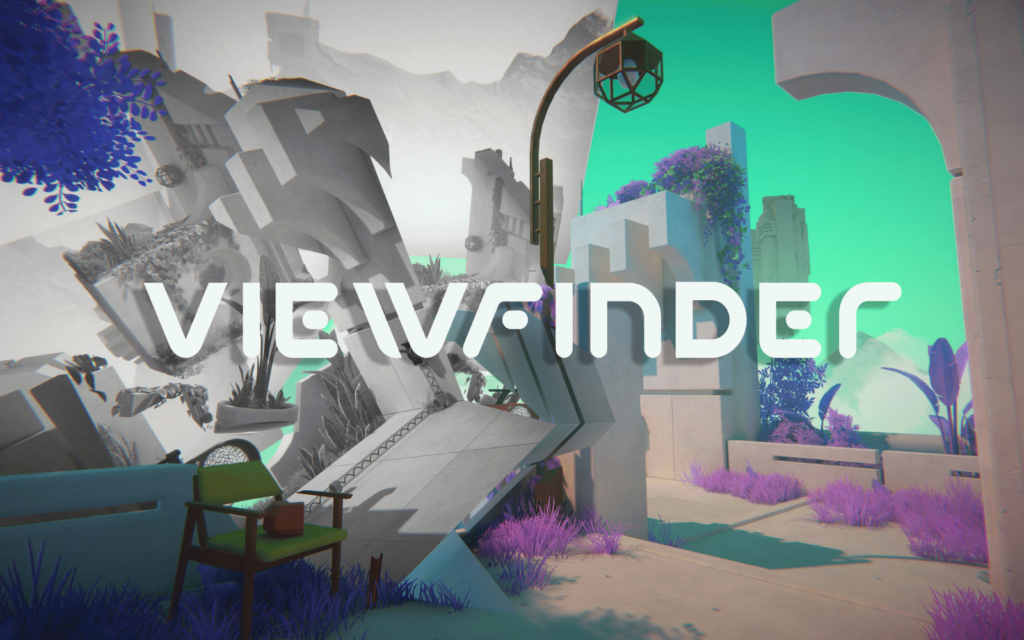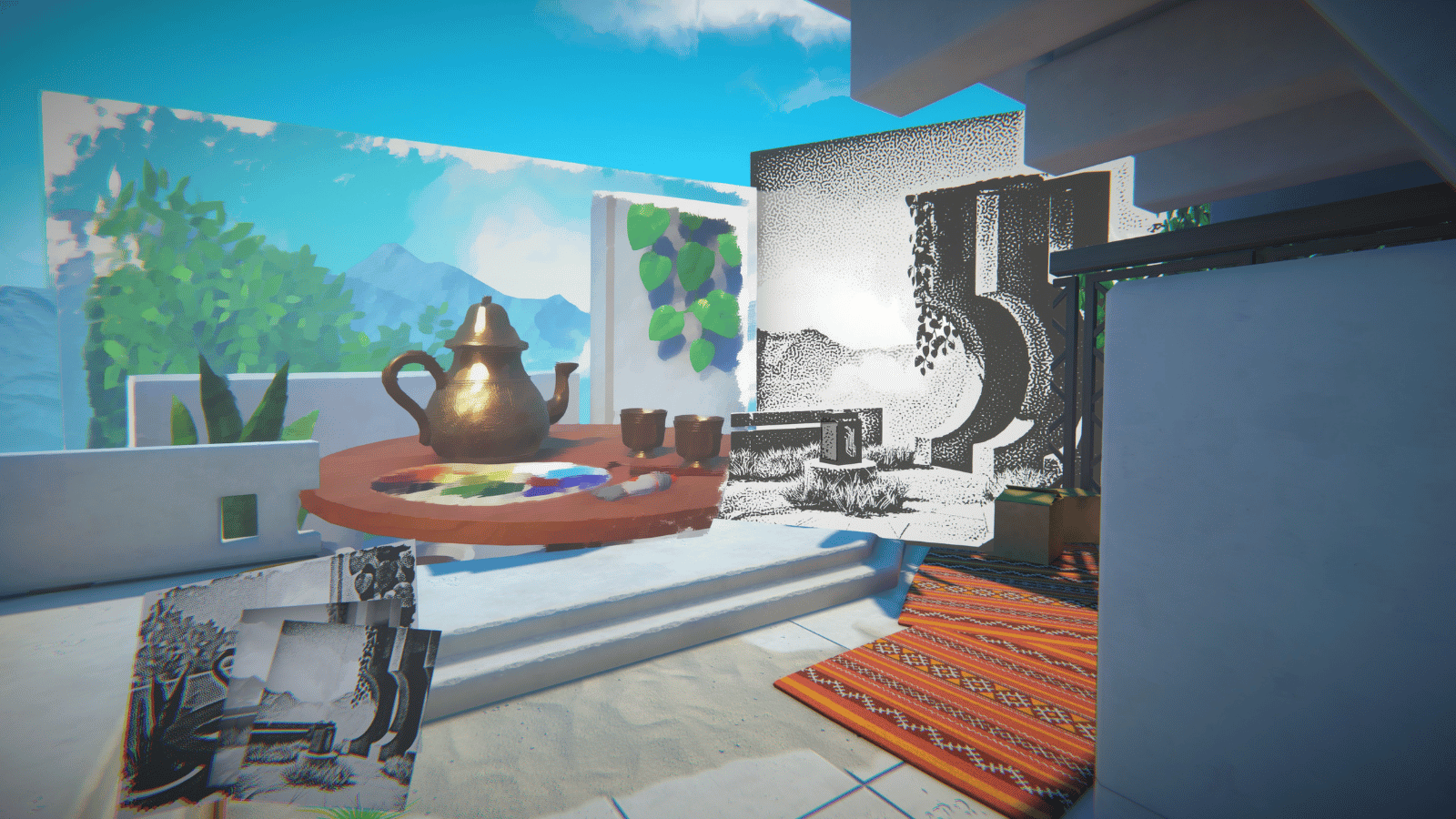The thing about Viewfinder is that there's no set way to go about anything - just like any puzzle game worth its salt will tell you. We hardly ever felt limited in what we could do or create. There's a stunning serenity that Viewfinder throws at you in spades which we couldn't get enough of. We're already planning our next playthrough, which says more than we need to. You won't be disappointed in picking this one up especially for the asking price.
-
Story
-
Gameplay
-
Replayabilty
-
Visuals
-
Performance
-
Puzzles
When it comes to Sad Owl Studio’s Viewfinder – which recently hit the PlayStation and Steam stores – perception is everything. It’s not often that a game comes along introducing mechanics so outlandish that it changes the way you see things. In fact, the last thing to check that box was Portal 2. Viewfinder isn’t quite on that level, but it’s come the closest to reaching the high bar Valve set in 2011.
We knew we were in for a good time after the first few minutes of the game’s demo, which made the rounds on social media a couple of weeks ago. It provides a fantastical world where anything is possible, achieved with a ‘retro’ Polaroid camera that altered our preconceived thoughts of the surrounding universe with every shutter sound.
Did Valve make this?
At its core, Viewfinder is a puzzle game that reminds us most plainly of Portal 2, Superliminal, Braid and even the colour-blind person’s nightmare – The Witness. Don’t get us wrong, Viewfinder is very much its own thing. The most prevalent similarity involves its beautifully cartoonish cell-shaded art style and unique hook to get players through its varying levels of puzzlement.
Remember that Polaroid camera we mentioned? Viewfinder’s most interesting aspect is the one and only tool it gives you – the camera’s viewfinder. It allows the player to take two-dimensional images of the game’s floating-island puzzles and bring them forth into the third dimension, free to walk on, in and behind if you so wish.
You’ll be doing all that with the aim of reaching each level’s end goal, usually in the form of a teleporter. When you get there, it’ll send you off to a fresh new world begging to be explored. Sometimes, reaching a teleporter is as simple as snapping a picture of a bridge, and placing it within base reality to cross a gap. Other times, it’s about as difficult as restructuring the laws of physics. And that’s… good. This is a puzzle game after all.
Somewhere along Viewfinder’s nearly six-hour roving experience, though, it begins to subtly change the rules. Occasionally it’ll throw in the added incentive of powering up those teleporters with batteries, though it doesn’t always give you the right tools for the job. Say a teleporter needs two, three or sometimes even four batteries before it’ll put out enough power, just snap a picture and whaddya know – now you have two.
Other times, however, there might not even be a teleporter, instead asking the player to line up certain perspectives to unlock new pathways. Sometimes you won’t even have that trusty camera handy and will be forced to use the ready-made images scattered around the level. And even when you do have the camera in hand, there might be an artificial limit on how many images it can take, to throw a spanner into the works whenever things start feeling a bit too easy.
(And if you find yourself getting stuck, there is a hint system in place that’ll only kick in when you’re taking too long on a puzzle. Or so we’re told…)
Fizzling out

We weren’t quite as intrigued by the game’s story – oh yes, there’s a story – as we were with the perspective mechanics. It’s not the main attraction. That title’s awarded to the viewfinder and all the puzzling curiosities it brings with it. There’s still a story to be had, and a rather interesting one, though it’s left up to each player to seek it out.
It’s not a big spoiler to say that the world the player inhabits is one built by scientists, made as a place to carry out experiments in a world ungoverned by Earth’s usual limitations. Throughout the six-ish-hour campaign, you’ll come across post-it notes and voice recordings left by each of the scientists. You’ll slowly learn that the scientists are on the verge of something big, something that’ll change the outside world (AKA the real world) forever.
Each of those little snippets is unique to the scientists that left them behind, with each ‘world’ you find them in custom-built to their tastes, likes and personalities. One, for example, is a big plant-lover, evidenced by the world’s brimming plant life while another’s got a proclivity towards sweets, cakes and chocolate.
You won’t have to go about it alone. Players are accompanied by CAIT, an artificially intelligent feline that takes the form of a cuddly (and pettable) cat that’ll act as your guide and companion along the winding journey.
That’s all just there to give the levels something else to look at than the numerous batteries you’ll be duplicating to progress to the next level, and a story to tie it all together. We liked the sprinkles of information scattered throughout, though we doubt it’ll grip us as much on a second playthrough.
Viewfinder verdict
Despite the somewhat interesting story, which might not be every player’s cup of tea, there’s no dispute that Viewfinder is one of the best puzzle games of late and deserves a spot on the list among the genre’s greats. It’s a constantly evolving experience that we never grew tired of exploring and gave us enough tools early on that said ‘go on, do it.’
Providing the freedom to dream up their own solutions makes every player’s experience unique while still achieving the same end goal. That also makes additional playthroughs more appealing if you’re the completionist type. For a game from a lesser-known developer, and for the asking price – R230 on Steam and R450 on PlayStation – you can’t ask for more than that.






